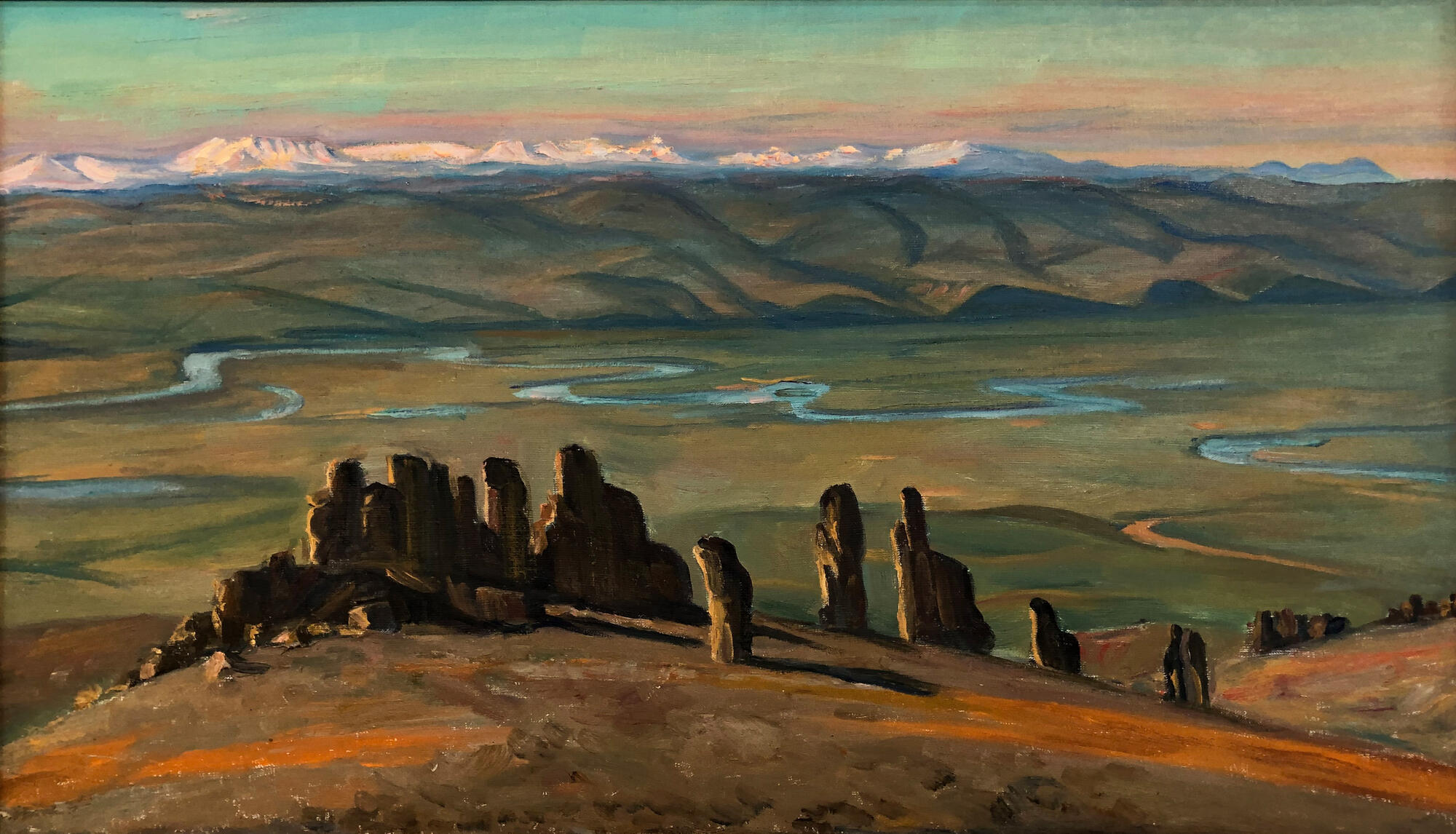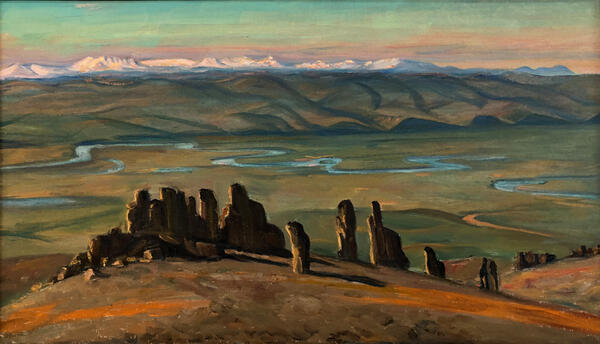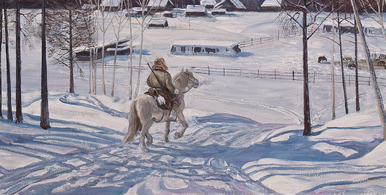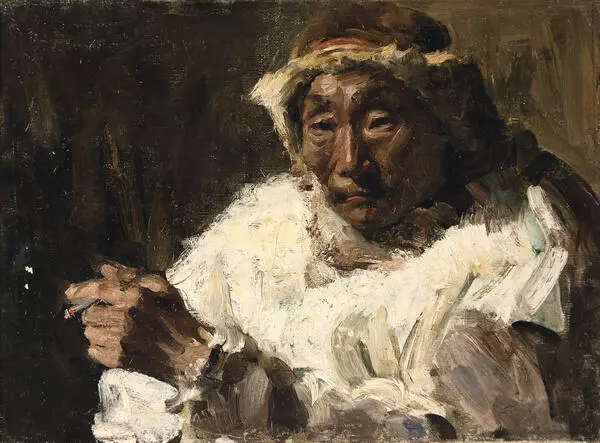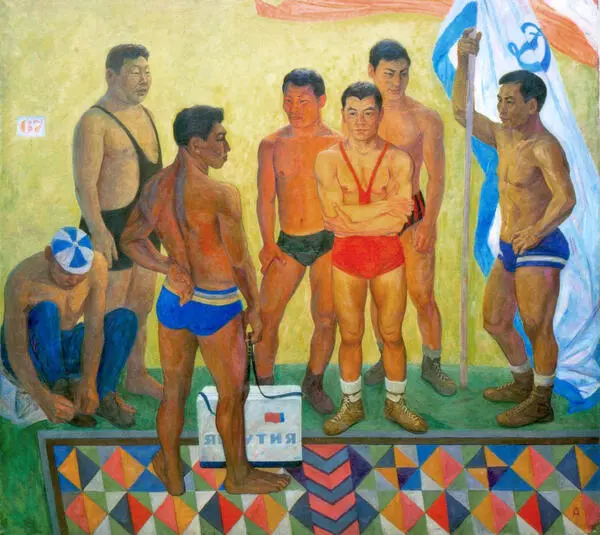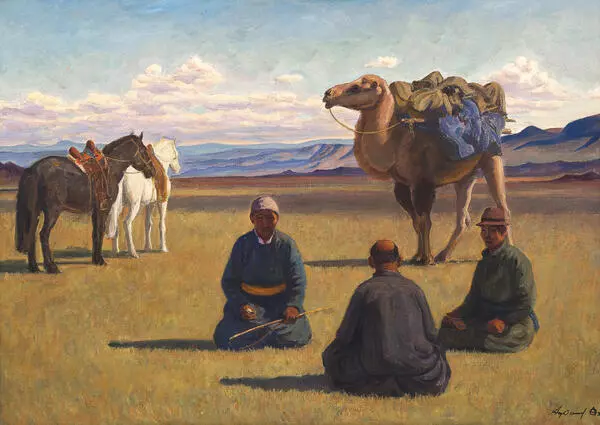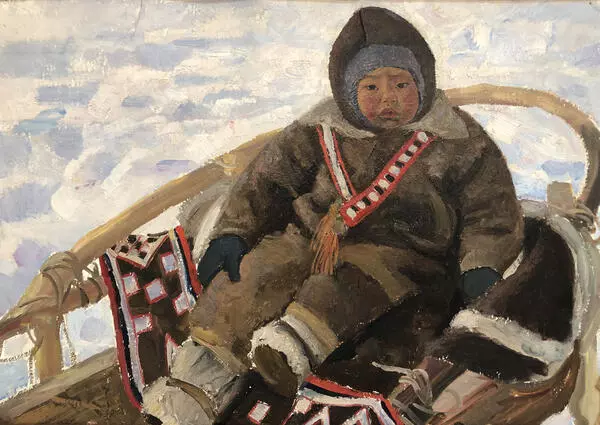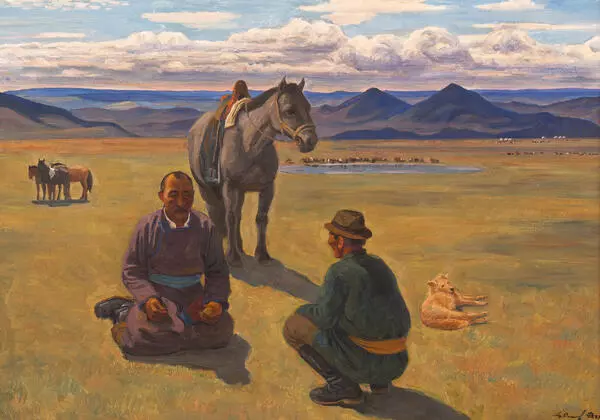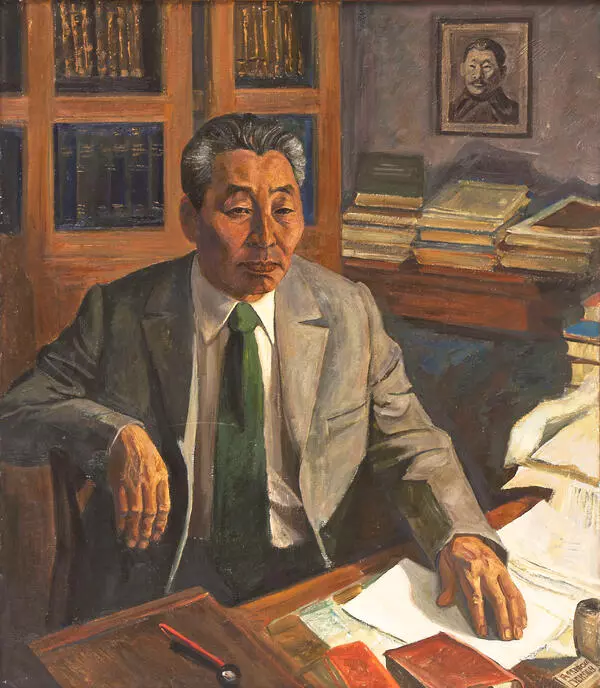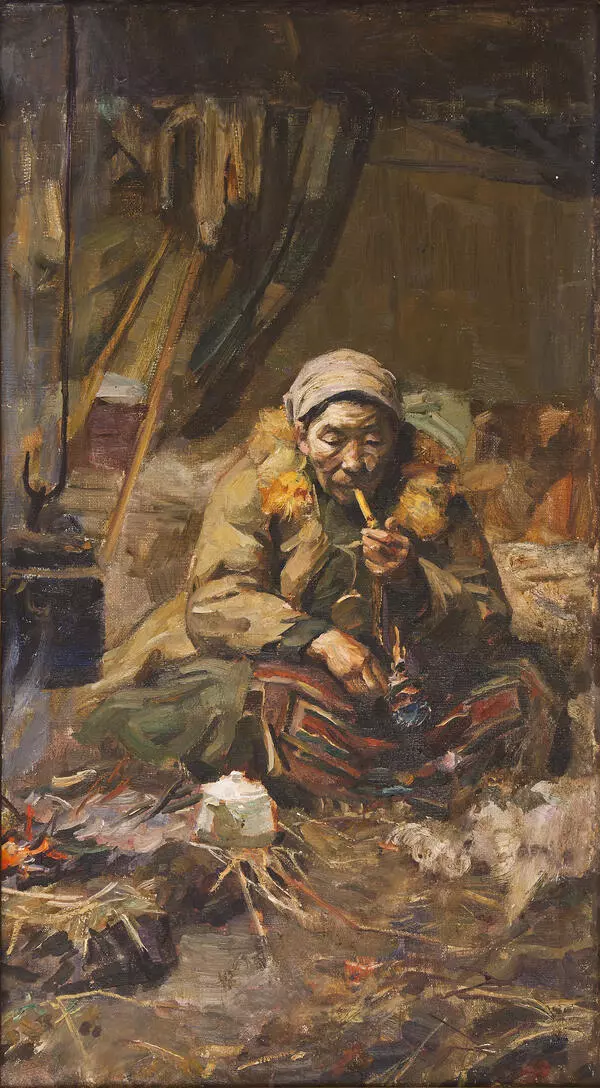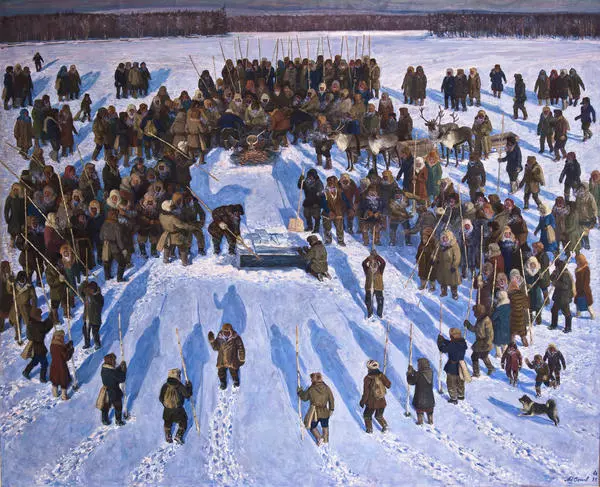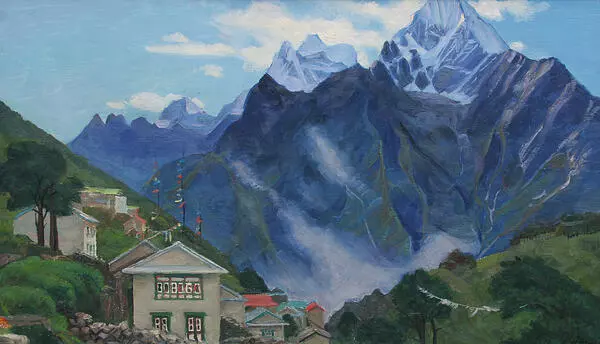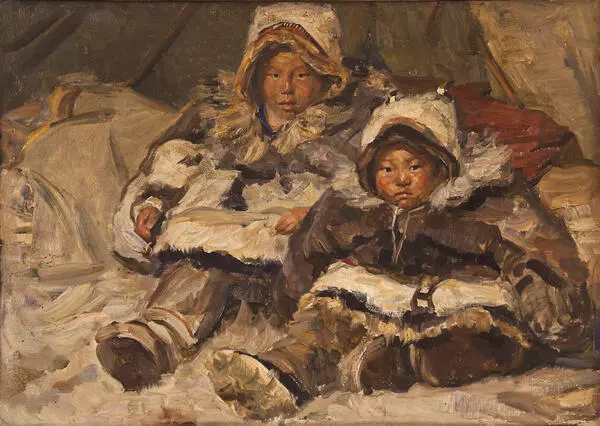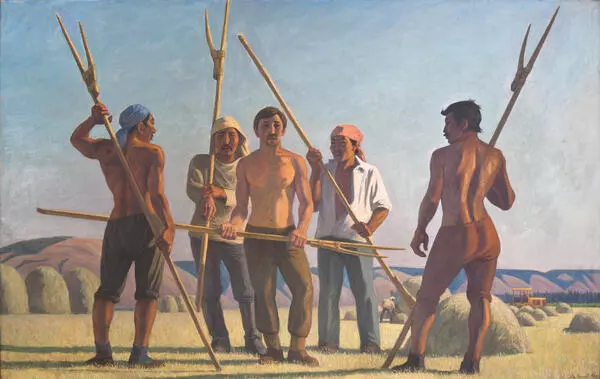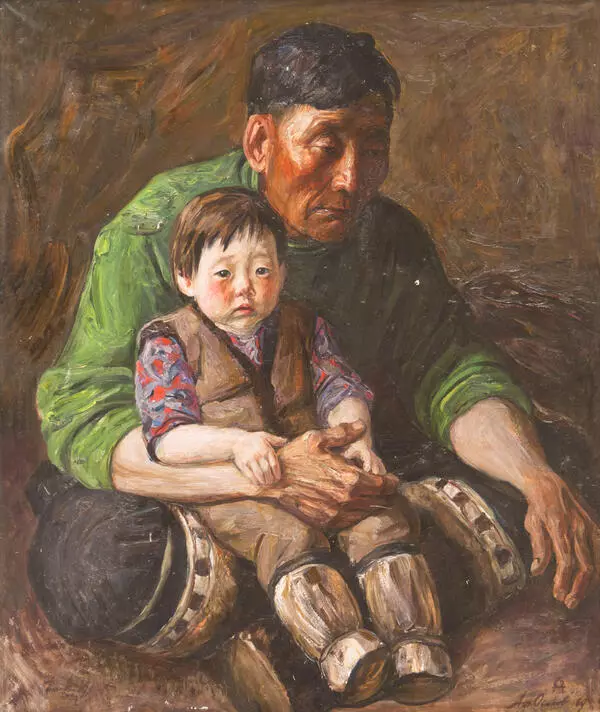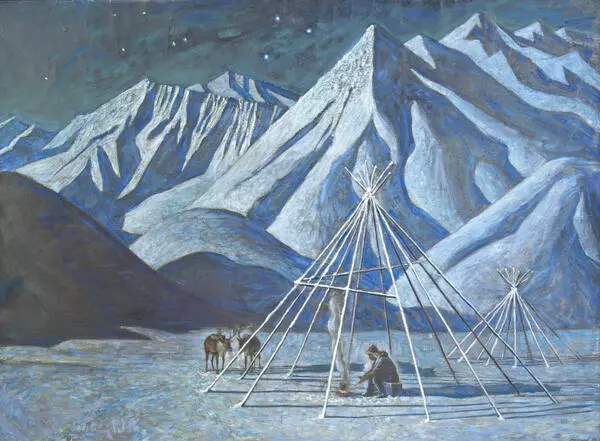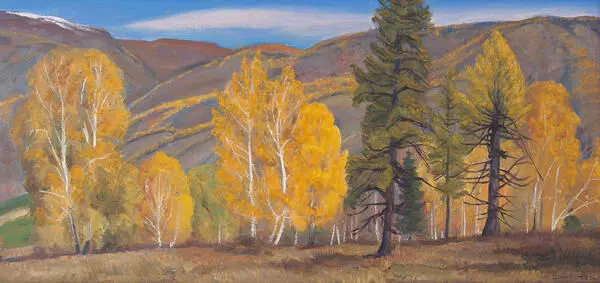The exhibition ‘Art World of Afanasy Osipov’ in the National Art Museum of the Republic of Sakha (Yakutia) introduces visitors to the work of this Yakut painter. Afanasy Osipov was born on February 28, 1928 in Gorny Ulus in Yakutia. After finishing school and technical school, he went to Moscow. There he studied painting at the art school, and then at the Surikov Moscow State Academic Art Institute. The works of the artist Afanasy Osipov are kept not only in the National Art Museum of the Republic of Sakha (Yakutia), but also in the State Tretyakov Gallery, the State Russian Museum, and in private collections in Russia and abroad.
In 2004, the Yakut artist and painter Afanasy Osipov created the composition ‘View from Above’ dedicated to the unique natural monument of Yakutia, i.e. the majestic Kisilyakh Mountains located in the Verkhoyansky District on the watershed of the Yana and Adycha Rivers.
Since ancient times, the Yakuts treated nature with respect and coexisted with it in harmony. Kisilyakh, which means ‘a place where there are people’ in Yakut, is a sacred mountain for the inhabitants of the Northern lands protected by them for many centuries. According to an ancient legend, when the land of modern Verkhoyansk was not yet covered with snow horizons and unbroken ice, people lived in the mountains. Climate change brought more and more cold every year, and when it seemed impossible to live among the frosty breath of nature, the people of the mountains decided to move to the South. On the road they got into trouble. While turning the Kisilyakh Ridge, many of them froze and turned into stone statues. According to a legend, since then, sacred ‘kisilyakhs’ are the places of power. A positive life energy emanates from them.
In 2004, the Yakut artist and painter Afanasy Osipov created the composition ‘View from Above’ dedicated to the unique natural monument of Yakutia, i.e. the majestic Kisilyakh Mountains located in the Verkhoyansky District on the watershed of the Yana and Adycha Rivers.
Since ancient times, the Yakuts treated nature with respect and coexisted with it in harmony. Kisilyakh, which means ‘a place where there are people’ in Yakut, is a sacred mountain for the inhabitants of the Northern lands protected by them for many centuries. According to an ancient legend, when the land of modern Verkhoyansk was not yet covered with snow horizons and unbroken ice, people lived in the mountains. Climate change brought more and more cold every year, and when it seemed impossible to live among the frosty breath of nature, the people of the mountains decided to move to the South. On the road they got into trouble. While turning the Kisilyakh Ridge, many of them froze and turned into stone statues. According to a legend, since then, sacred ‘kisilyakhs’ are the places of power. A positive life energy emanates from them.
According to geologists, the age of these rocks reaches 60 million years. Dotted with columnar rocks, the Kisilyakh Mountains are located at 1,070 meters above sea level, and their length is 25 kilometers. The noble color of the landscape is conveyed by sonorous gray-green and somewhat muted sky-blue shades. The image of a river flowing through a hilly space gives the painting a special compositional rhythm. Rocky shapes and figures formed as a result of cryogenic weathering resemble human outlines. The artist offers the viewer a bird’s-eye view of them.
